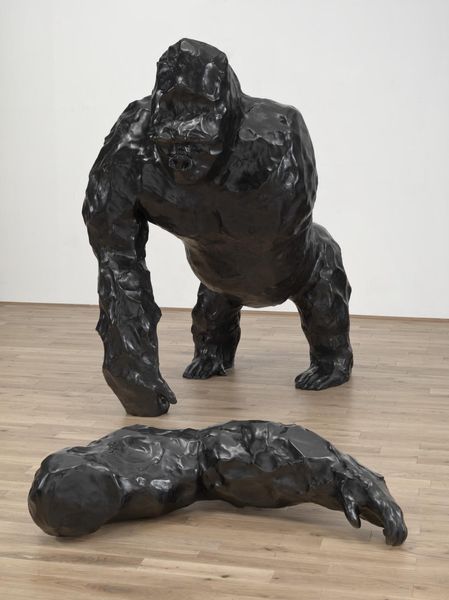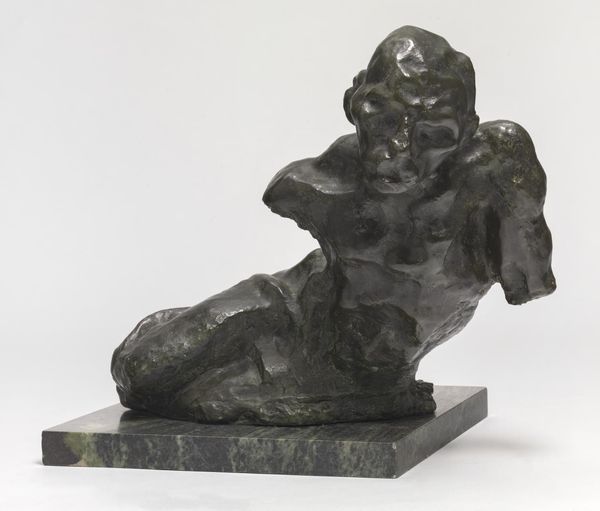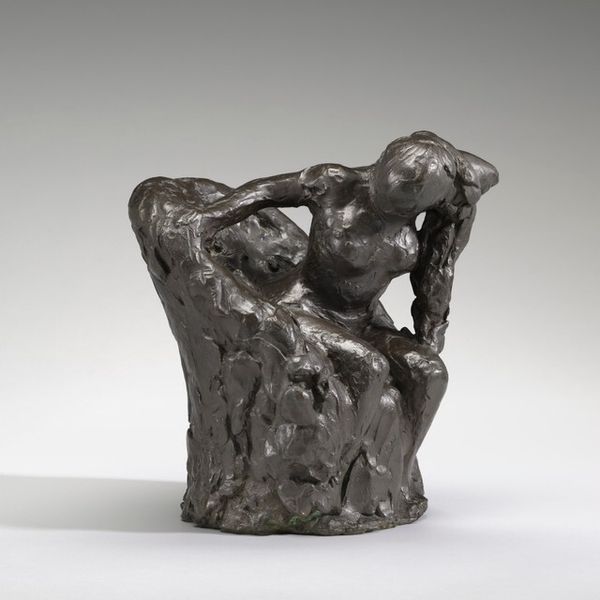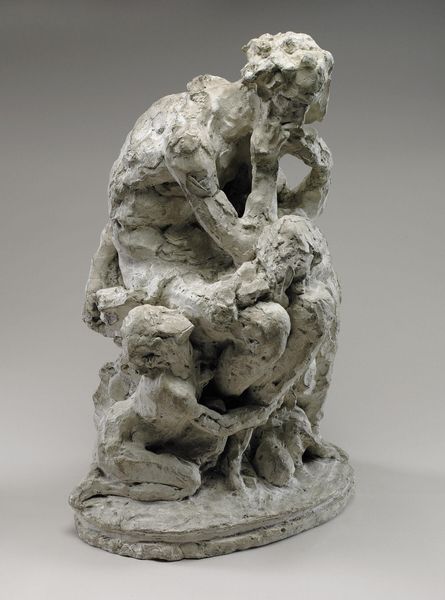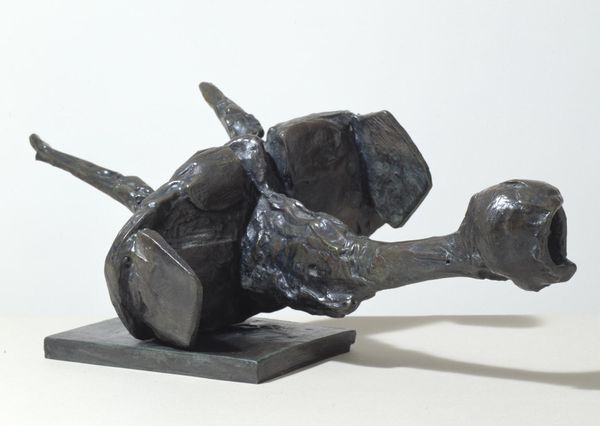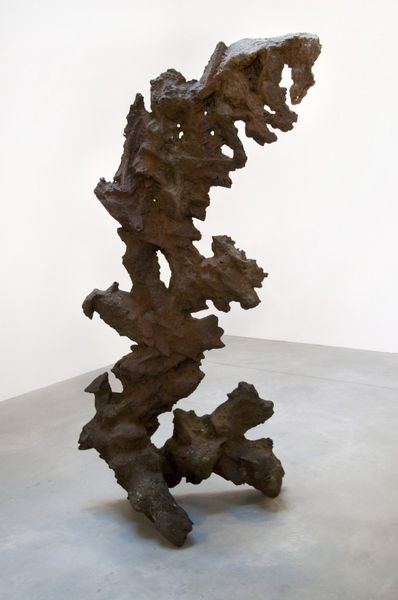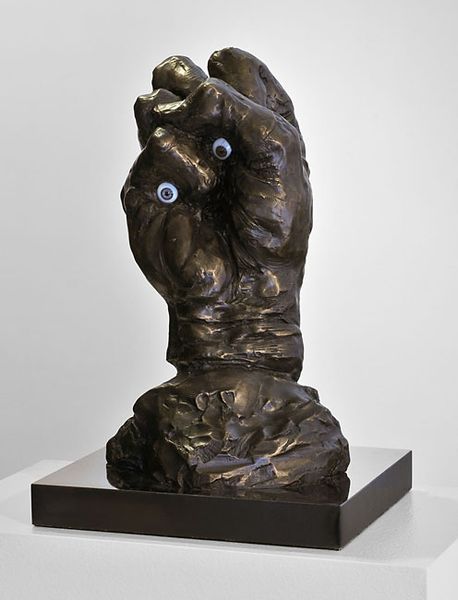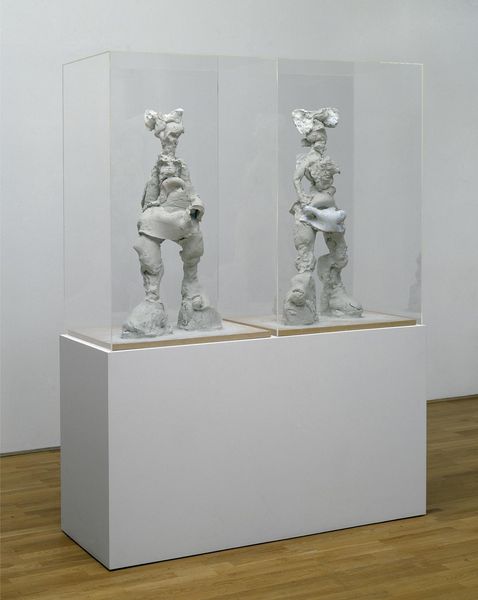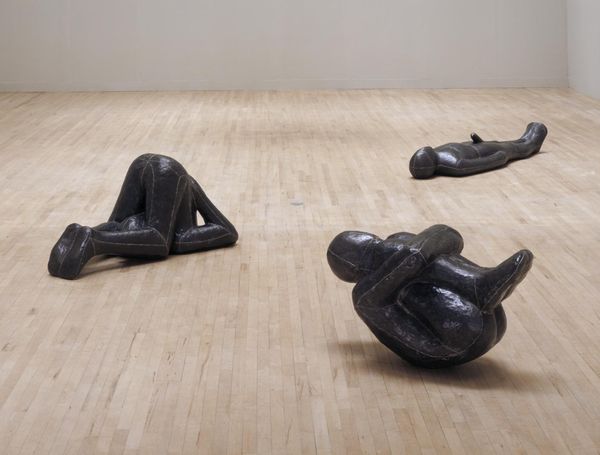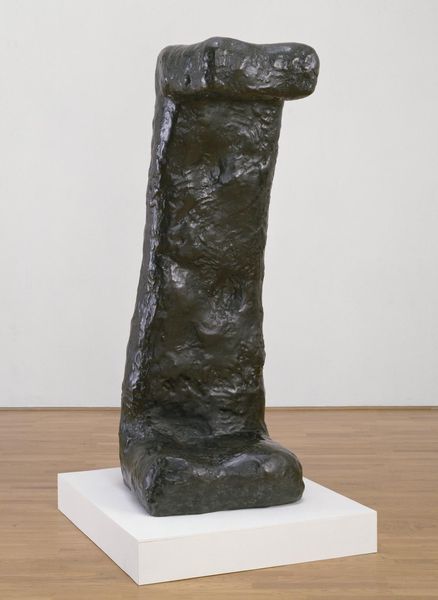
Dimensions: object: 965 x 940 x 829 mm
Copyright: © Willem de Kooning Revocable Trust/ARS, NY and DACS, London 2014 | CC-BY-NC-ND 4.0 DEED, Photo: Tate
This striking sculpture is Willem de Kooning’s ‘Seated Figure on a Bench’, created in 1972. De Kooning modelled the figure in clay and later cast it in bronze. It depicts an abstract female body who is arranged on a small seat. It’s difficult to make out where the woman ends and the bench begins. The shapes seem to blend together, and both forms are moulded in the same neutral grey colour. Willem de Kooning (1904-1997) is primarily known as an abstract expressionist painter. Abstract expressionism emphasised the physical properties of the material – De Kooning often worked with impasto, or thick layers of paint. Women with exaggerated limbs were a key motif in his paintings. These bold and unsettling paintings were controversial for their aggressive representation of traditional femininity. This sculpture makes use of the same fleshy, monstrous style as De Kooning’s ‘Woman’ paintings – yet transformed into three-dimensional space. The figure has exaggerated, twisted limbs that are emphasised through the knotty texture of the clay. De Kooning was known to wear two pairs of industrial gloves to extend his fingers, so that he could mould bigger areas of clay! The resulting rough surface provides a visceral and expressive feel. ‘Seated Figure on a Bench’ is one of the artist’s largest sculptures – it’s close to life size! He used an internal wire frame to support the clay. The bench was added after the figure was finished, to provide essential structural support. 🪑
Comments
tate 8 months ago
⋮
http://www.tate.org.uk/art/artworks/kooning-seated-figure-on-a-bench-t03162
Join the conversation
Join millions of artists and users on Artera today and experience the ultimate creative platform.
tate 8 months ago
⋮
De Kooning began making sculpture in 1969, having previously discarded the idea much earlier in his career. This sculpture is one of his largest and was modelled in clay. Because his hands were too small to work the clay in the way he wanted, he wore two oversize pairs of workman's gloves, thereby ending up with fingers five or six inches long. The increase in size of his hands allowed him to work more broadly than he would have otherwise been able. De Kooning's interest in the expressiveness of the material falls within the tradition of sculpture beginning with Rodin and taken up by Giacometti. Gallery label, August 2004
